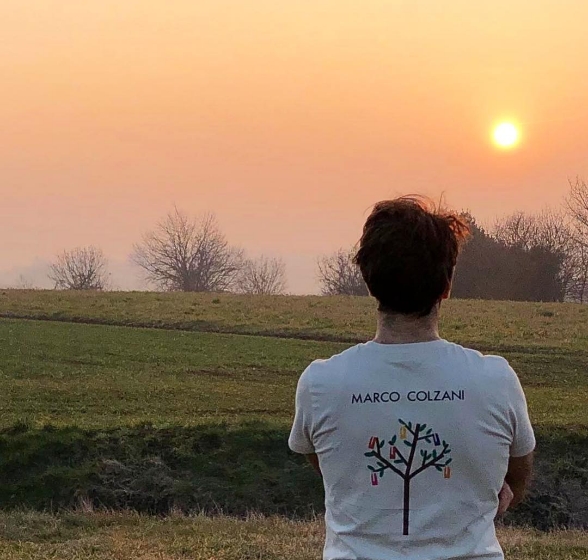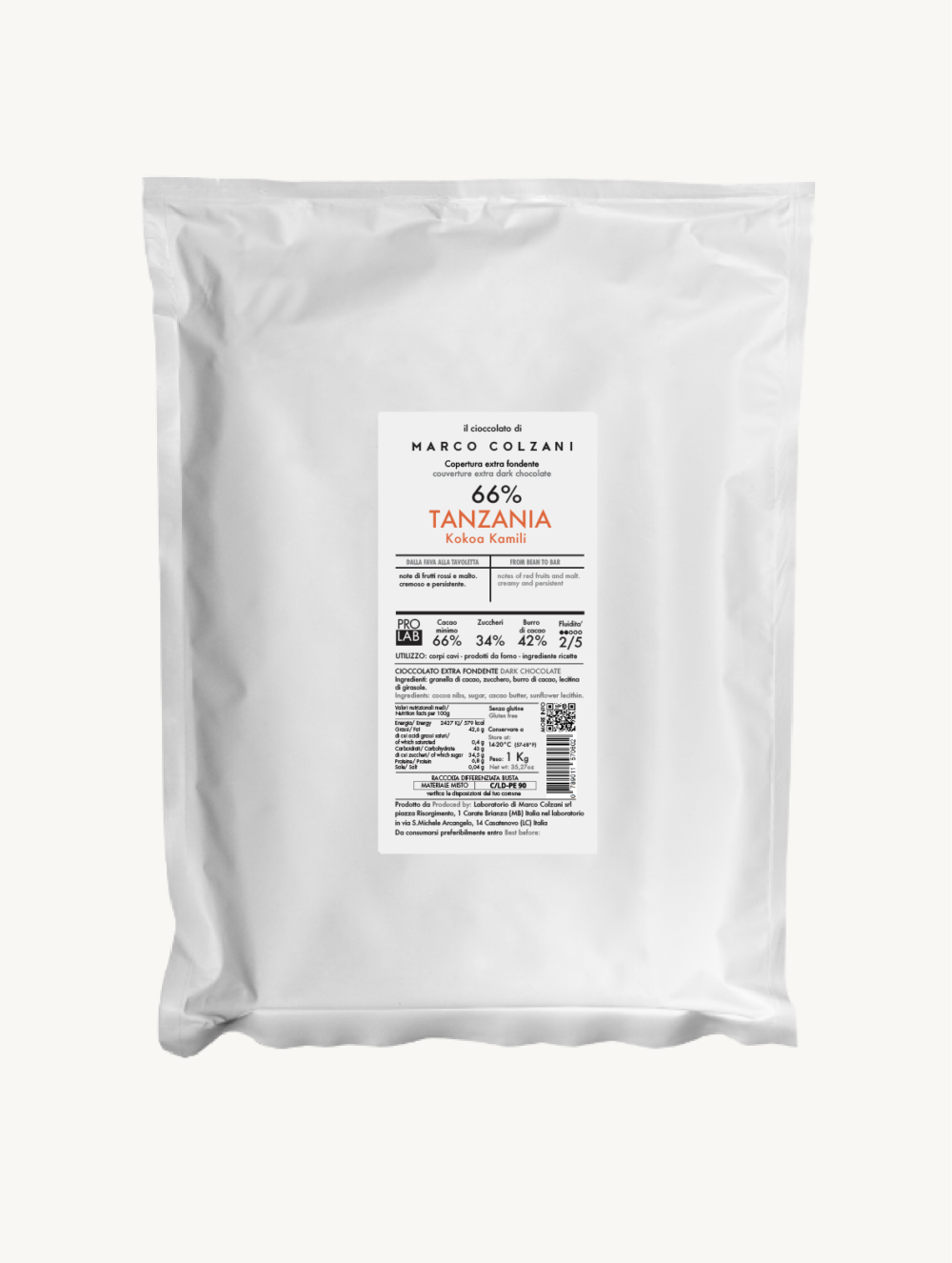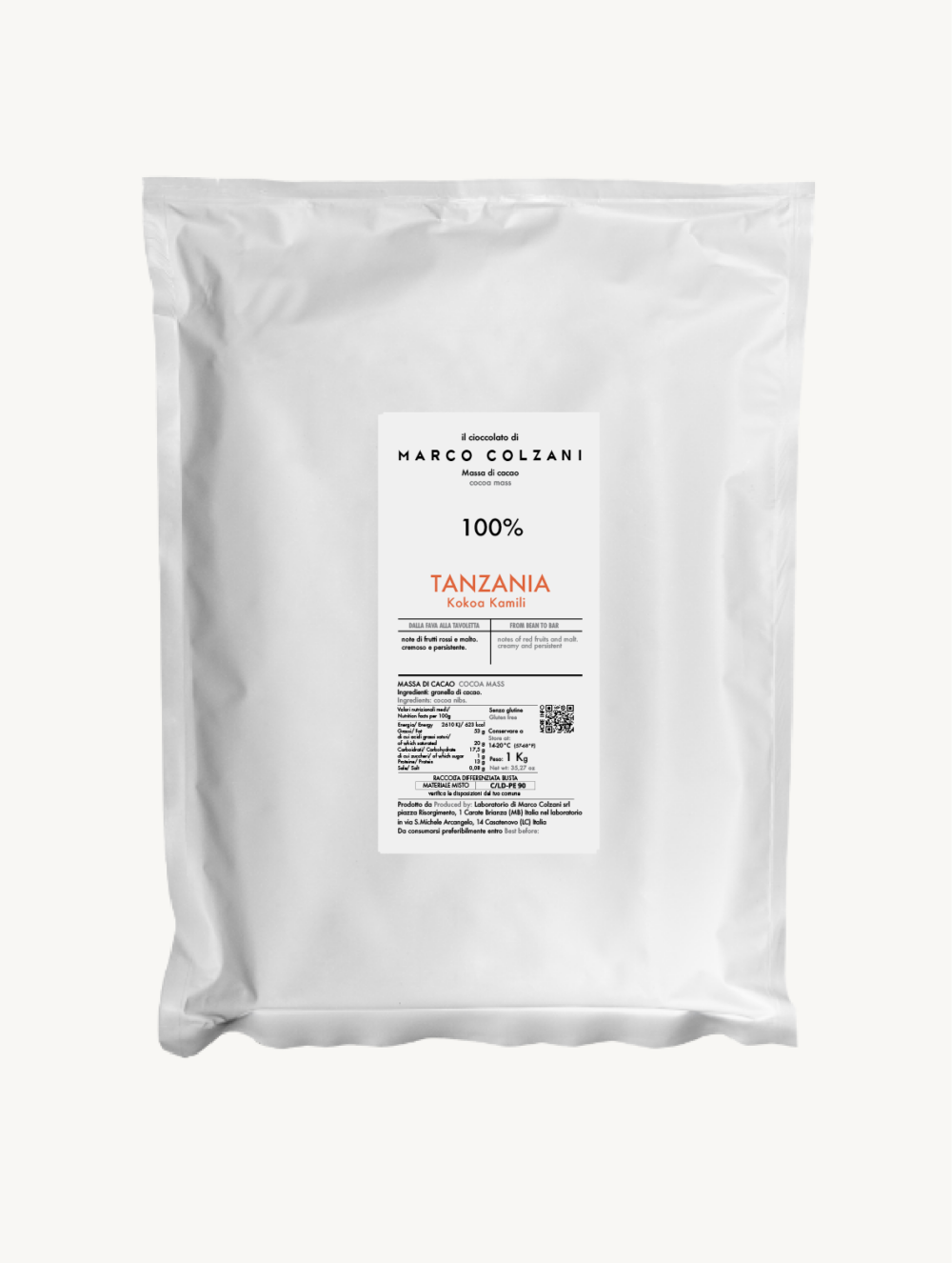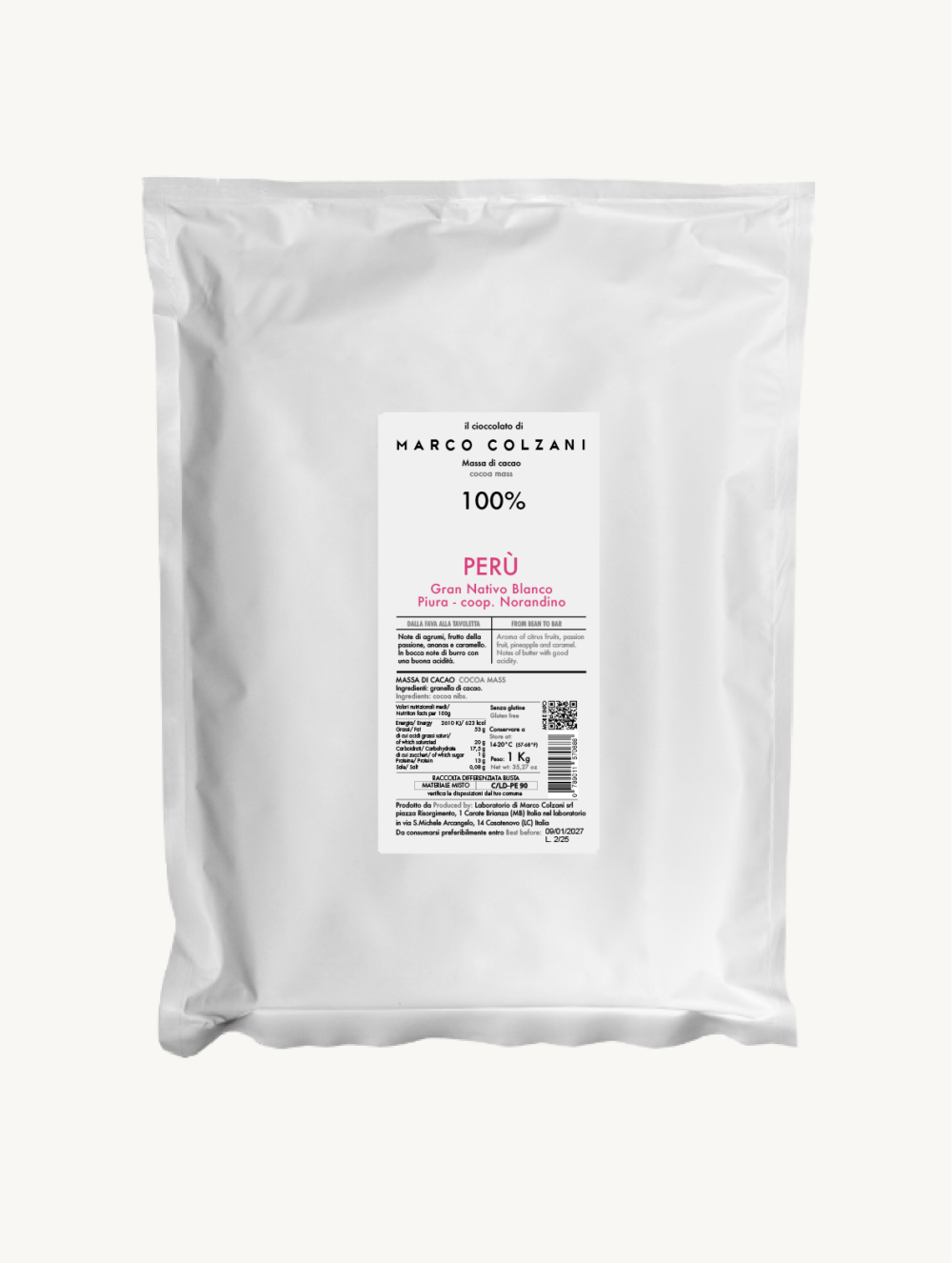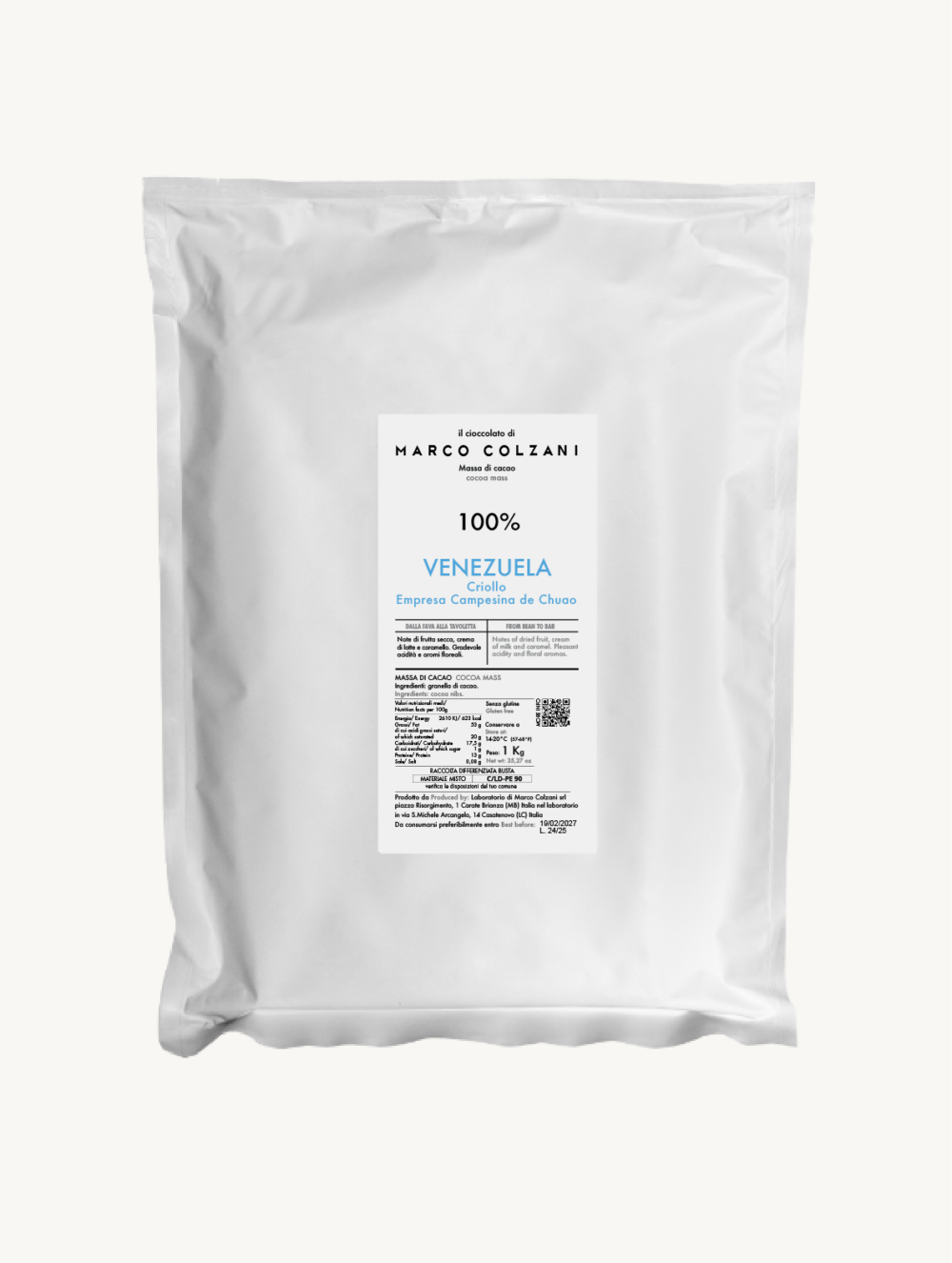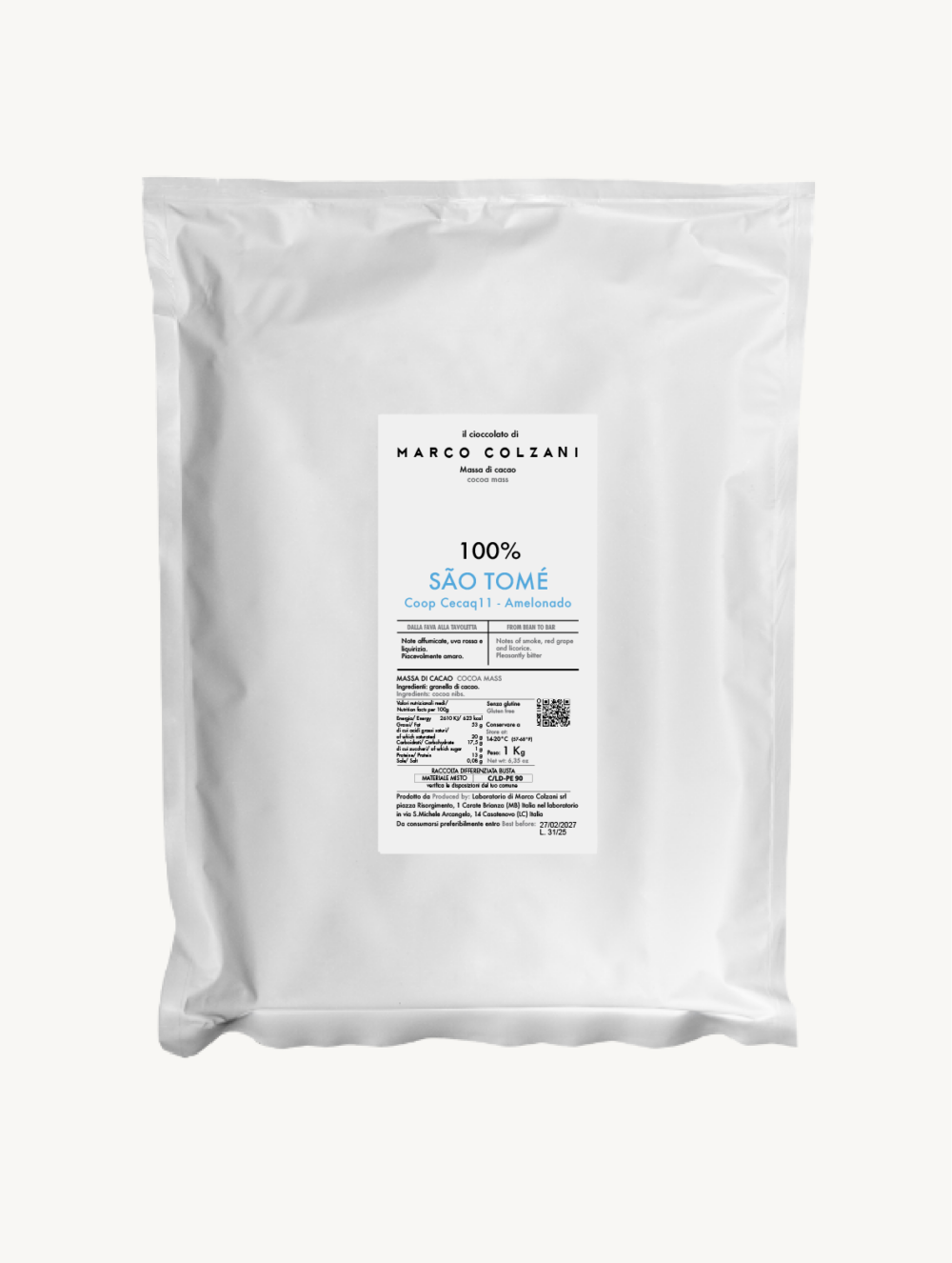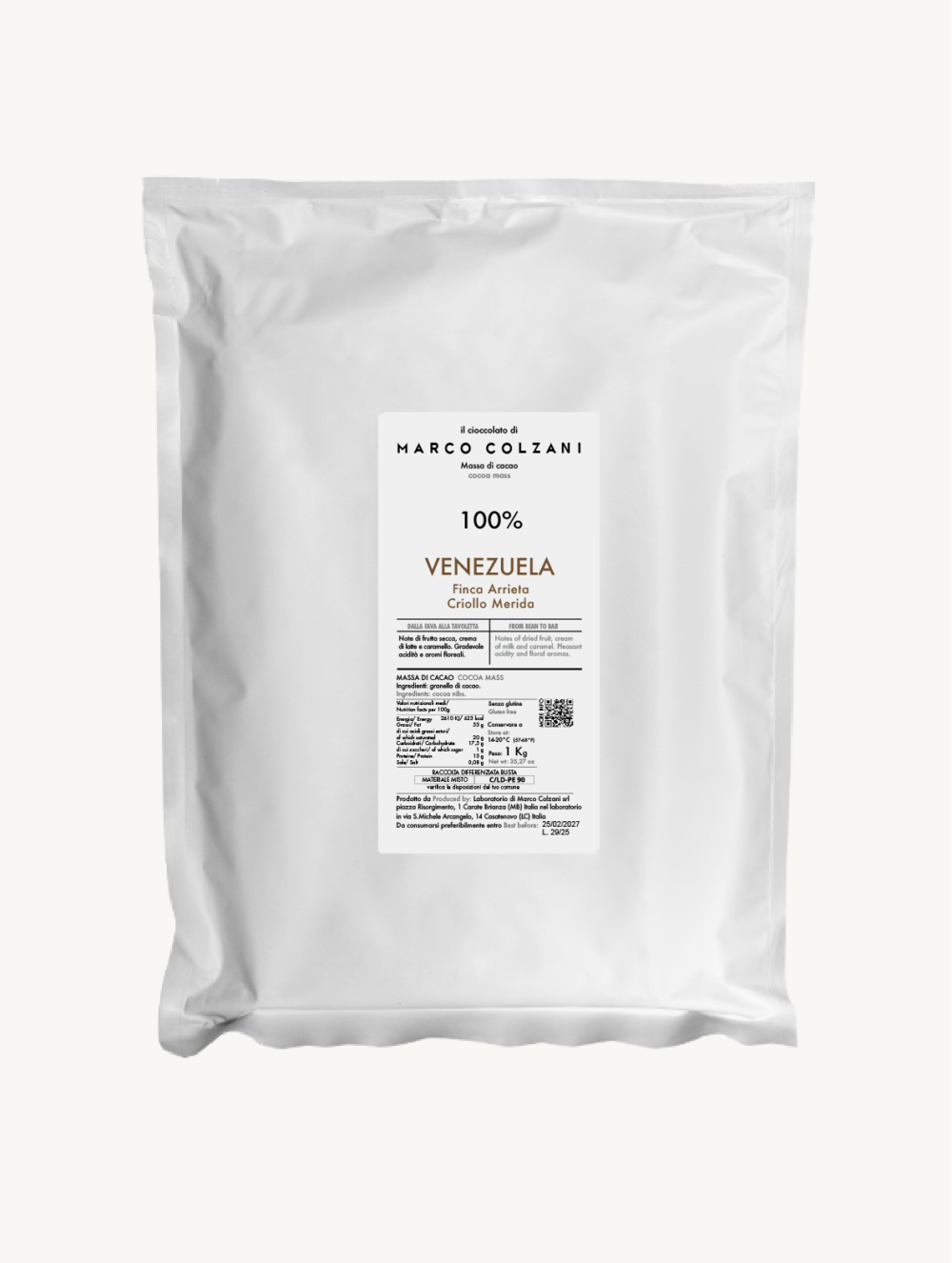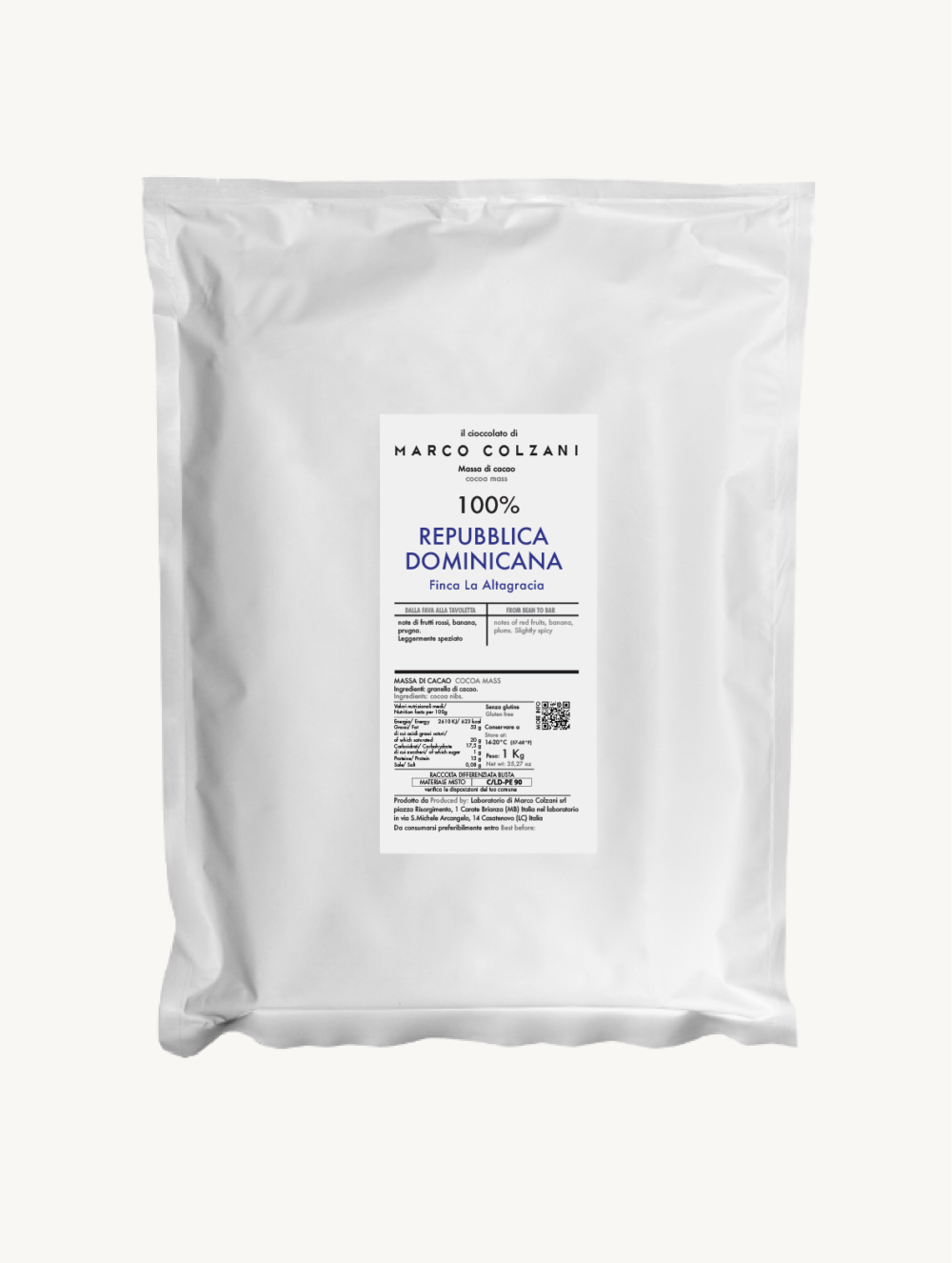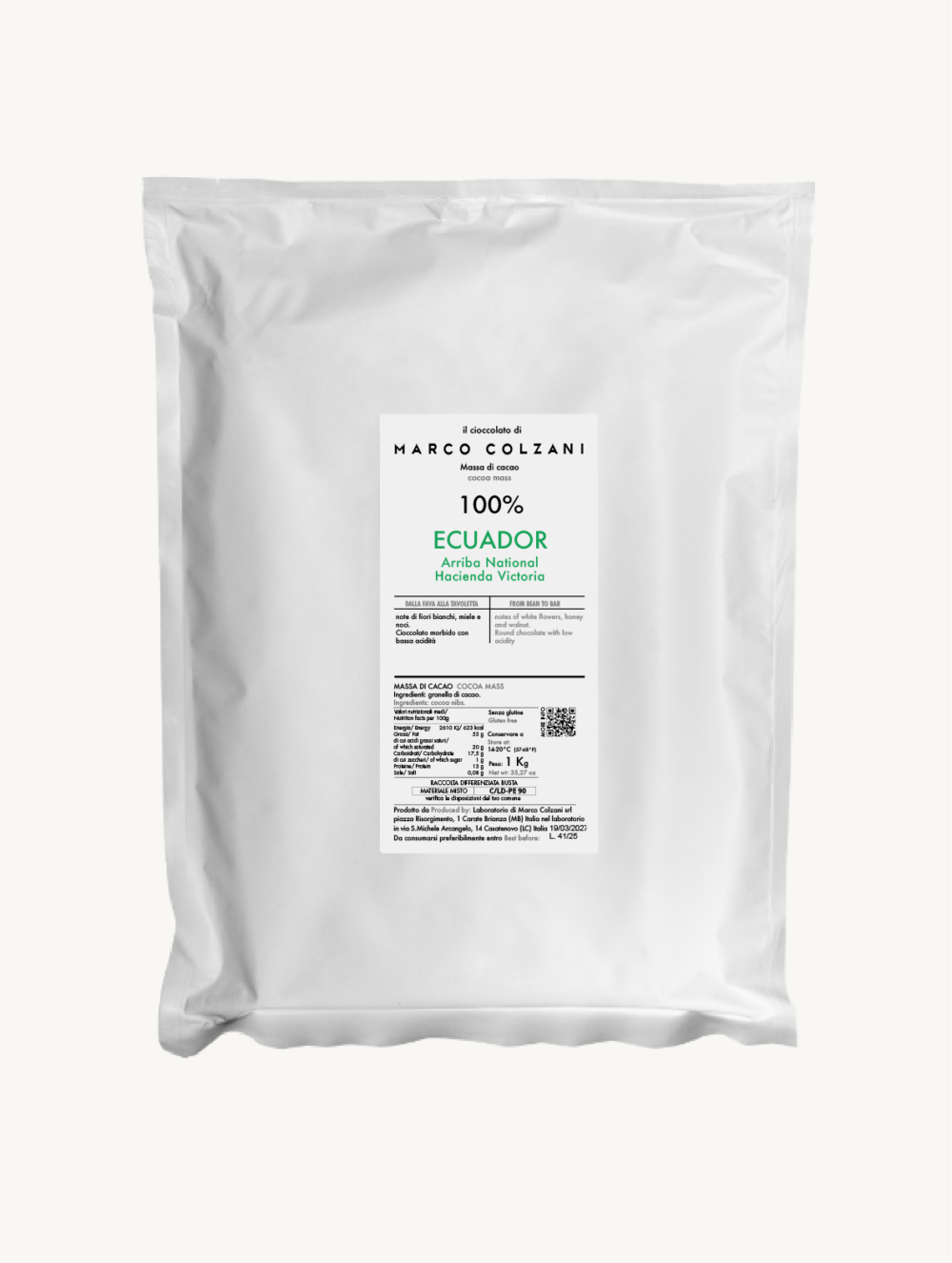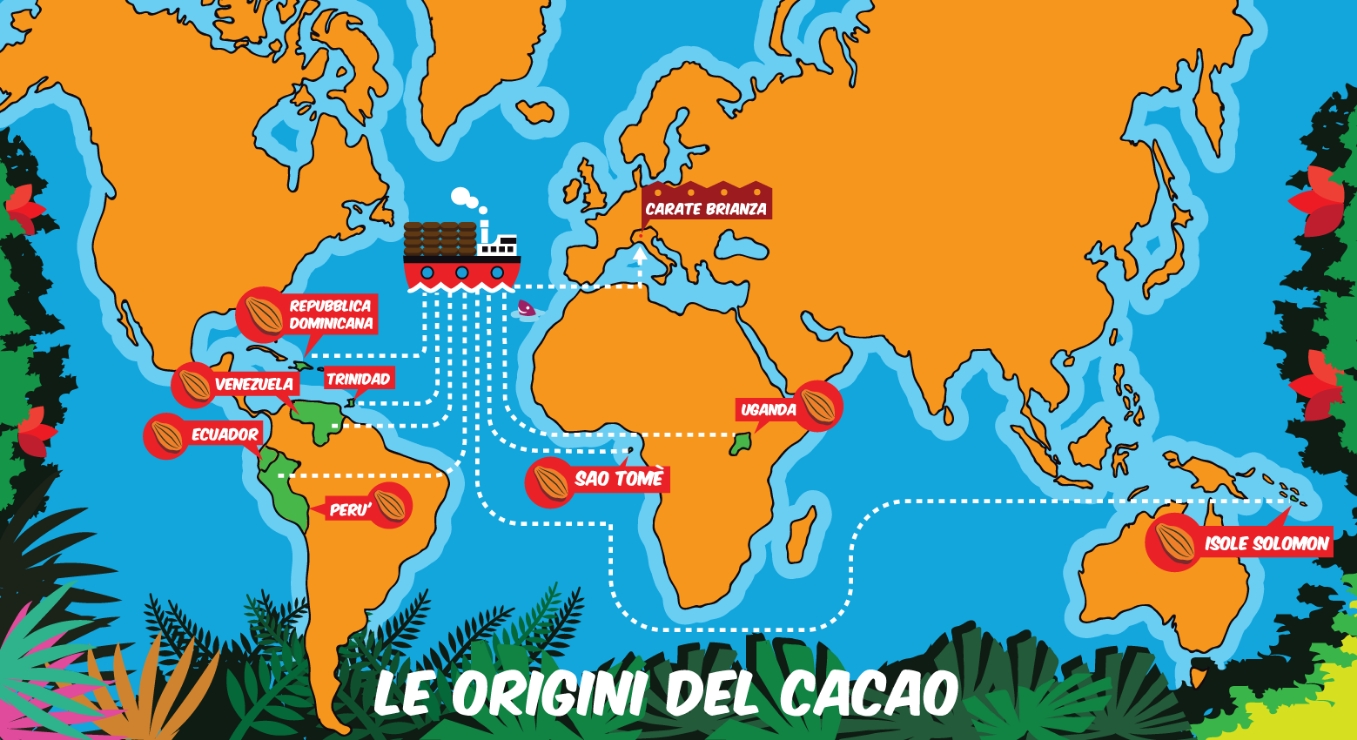
I NOSTRE FILIERE DEL CACAO
Il cacao è un prodotto agricolo! Dietro ogni cioccolato c’è una piantagioine e dei contadini che coltivano le piante del cacao per fornirci il loro seme, le fave di cacao.
CHUAO
PAESE: Venezuela
ZONA DI COLTIVAZIONE: Villaggio di Chuao, Aragua
GENETICA: Più di 30 diverse varietà di cacao Criollo e trinitario
NOTE AROMATICHE: Frutta gialla, agrumi, frutta secca
RACCOLTA: Giugno/ Agosto, Ottobre/Dicembre
Chuao
PIANTAGIONE
La storia del cacao a Chuao è iniziata nel XVII secolo con i coloni spagnoli.
Oggi Chuao è conosciuto come la casa del cacao più buono, famoso e costoso del mondo. Il nome di Chuao deriva da un’antica parola indigena caraibica che significa “acqua”. Non c’è da stupirsi perché il villaggio è accessibile principalmente via acqua, viaggiando dal mare della vicina Choroni con piccole imbarcazioni che trasportano persone, cibo, mobili, motorini e… sacchi di cacao! Ci sono pochi posti al mondo più idilliaci del piccolo villaggio di Chuao.
Il villaggio è annidato in una valle isolata nel nord del Venezuela, circondato dalla giungla a un’ora di cammino dalla costa caraibica. Le foreste circostanti e il parco nazionale offrono un’abbondante biodiversità, che è conservata e protetta dalla legge. Il cacao Chuao è coltivato biologicamente e in armonia con il suo ambiente naturale. Dei 3.000 abitanti di Chuao, 200 lavorano nella produzione del cacao, principalmente donne, mentre gli uomini si dedicano molto alla pesca. I lavoratori fanno parte dell’Empresa Campesina de Chuao, sono divisi in “squadre” per la raccolta, la fermentazione, l’essiccazione, ecc.
La maggior parte del lavoro del cacao, e sicuramente il lavoro post-raccolta, è svolto da donne. Il cacao Chuao ha un’ampia diversità genetica: più di 30 varietà. La genetica del cacao in questa valle isolata tra le montagne e il mare è ben conservata e si è evoluta nel tempo solo dall’impollinazione con gli alberi di cacao locali. Durante l’alta stagione del raccolto, le donne raccolgono i frutti di cacao maturi. Un camion porta le fave al centro del villaggio dove la fermentazione dura dai 6 ai 7 giorni in cassette di legno ricoperte di foglie di banano.
Segue la meticolosa “essiccazione Chuao”, che risale a 450 anni fa. Le fave di cacao si asciugano delicatamente al sole sul patio della chiesa, e ogni giorno i chicchi vengono spostati più vicino alla famosa chiesa bianco-azzurra, fino al termine del processo. L’asciugatura notturna continua nel magazzino centrale con pavimento in legno. Una volta completata l’essiccazione le fave vengono opportunamente selezionate, confezionate in sacchi da 60 kg, che vengono poi portati al molo di Chuao e trasportati con pescherecci a Puerto Colombia. Da lì in poi, il trasporto prosegue su camion fino a Caracas fino a un magazzino da dove viene esportato in tutto il mondo.
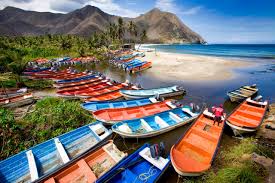
Dal 2019 l’associazione ha costituito una joint venture con Chuao Trading che consente la completa integrazione dai produttori ai clienti finali. Chauo Trading è un partner prezioso per l’Associazione Chuao, investendo nella qualità del cacao e nella comunità e assicurandosi che il cacao possa essere esportato dal Venezuela in Giappone, Stati Uniti ed Europa con certificati.
Quindi, solo i partner approvati dall’Associazione e Chuao Trading possono acquistare queste incredibili fave di cacao.
FINCA ARRIETA
PAESE: Venezuela
ZONA GEOGRAFICA: Sud del lago Maracaibo
GENETICA: CRIOLLO MERIDA
NOTE AROMATICHE: Frutta secca, latte, caffé, caramello, con una gradevole acidità e un finale floreale
RACCOLTO: Due raccolti. Cosecha de Verano, raccolto estivo da giugno e Cosecha de Invierno a partire da ottobre
Finca Arrieta
Il cacao del Sur del Lago è l’unione di criolli autoctoni, per composizioni genetiche e aromatiche simile al cacao Porcelana e mantiene molte delle qualità di base di questo cacao, con una piccola presenza di Pajarito colombiano. Questi criolli originari sono antichi ibridi merideni, ossia della zona di Merida, da qui l’appellativo Criollo Merida.
PIANTAGIONE
Mariela Arrieta è la donna dietro uno dei cacao più buoni del Venezuela. La Finca Arrieta è una delle piantagioni più produttive e organizzate del Paese e ciò anche grazie a Mariela che ha preso le redini dell’azienda con coraggio e ha scommesso su un progetto che l’ha messa alla prova e sul quale ha incontrato ostacoli, ma la perseveranza l’ha portata fino in fondo. Mariela rappresenta la forza e la tenacia di tantissime donne venezuelane, che si sono viste togliere tanto dalla vita, ma non hanno mai mollato. La Finca era gestita dal marito, ma trovatasi sola improvvisamente, questa donna ha dovuto rimboccarsi le maniche e portare avanti l’azienda per sopravvivere. Non sapeva niente di cacao, racconta lei stessa, ma non si è fatta abbattere, ha chiesto aiuto, consigli, ha studiato e si è affidata ad agronomi, ha migliorato il processo di fermentazione, si è presa cura della sua materia prima. Alla domanda se sia possibile fare del cacao una solida industria, lei risponde dicendo “Certo che lo è! Io vivo della mia fattoria, ci sono tante persone che lo fanno, il cacao è meraviglioso, e il cacao venezuelano è uno dei più ricercati, dobbiamo cercare di conservarlo e dargli il posto che merita”.
Mariela si attiva molto per coinvolgere lo Stato, perchè aiuti i contadini a dare giusta luce al proprio cacao, per rendere possibile l’esportazione e per dare sicurezza al produttore. Il cacao venezuelano è così bello, non solo nelle sue proprietà organolettiche ma nella sua storia e nella cultura che contiene.
La sua piantagione copre 16 ettari e lei è sempre in prima linea nel controllo di tutti i passaggi. Dal raccolto, che avviene due volte l’anno, passando per la fermentazione, parte del processo a cui si è dedicata tanto, fino all’essiccazione e alla selezione prima di mettere il cacao nei sacchi di juta.
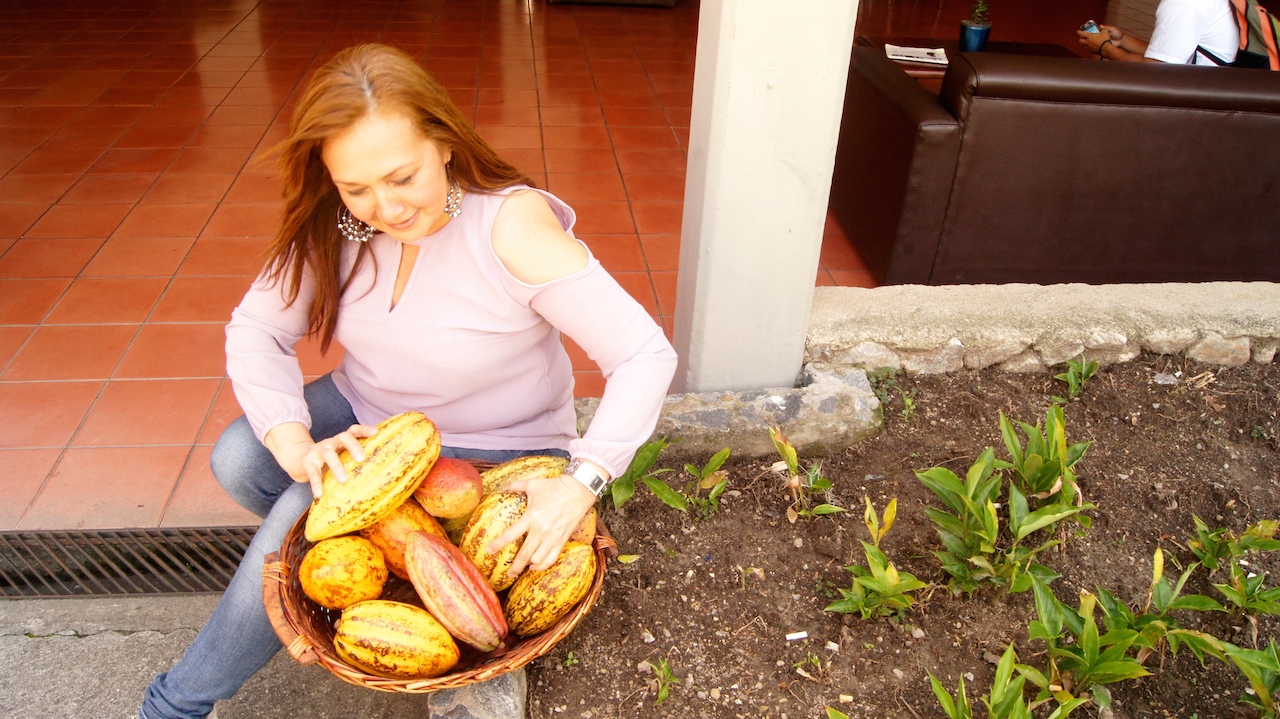
NORANDINO
PAESE: Perù
ZONA DI COLTIVAZIONE: San Juan de Bigotes, Piura
GENETICA: Criollo autoctono
PROFILO AROMATICO: Agrumi, frutto della passione, ananas e caramello
RACCOLTO: Dicembre – Luglio
NORANDINO
Coltivatori con piccole piantagioni raggruppati in cooperativa con il sostegno della cooperativa Norandino.
PIANTAGIONE
Il dipartimento di Piura è la patria di un cacao incredibile chiamato “Gran Nativo Blanco”.
Questa zona è la più calda del Perù con una sola stagione delle piogge tra febbraio e marzo ma il Gran Nativo Blanco ama queste condizioni tropicali secche. Il cacao prende il nome dall’alta percentuale di fave bianche, è una varietà che è stata dimenticata per molto tempo, fino alla sua riscoperta nel 2008.
In questa regione i contadini locali con l’aiuto di Norandino, un’organizzazione che si occupa di aiutare e sostenere i produttori locali, hanno reintrodotto la coltivazione di questa varietà di cacao con grandi risultati. Il cacao ha delle aromaticità delicate ma decise e questo ha contribuito a renderlo molto ambito nel mondo dei produttori di cioccolato. La sua genetica unica e la formazione costante per compiere al meglio i passaggi di post raccolta lo hanno reso uno dei migliori del Perù. Dopo la raccolta viene portato in un centro comune in cui la fermentazione dura 5-6 giorni in cassette di legno, dopodiché avviene l’essiccazione naturale al sole. Prima di essere insacchettato avviene uno scrupoloso controllo per raggiungere una qualità ancora più alta.
Grazie alla loro organizzazione e il supporto di Norandino le famiglie di contadini vivono e si sostengono grazie alla coltivazione di cacao, affiancato anche da altre colture come mango, limone, banana e avocado. Questo sistema promuove la biodiversità e previene la deforestazione.
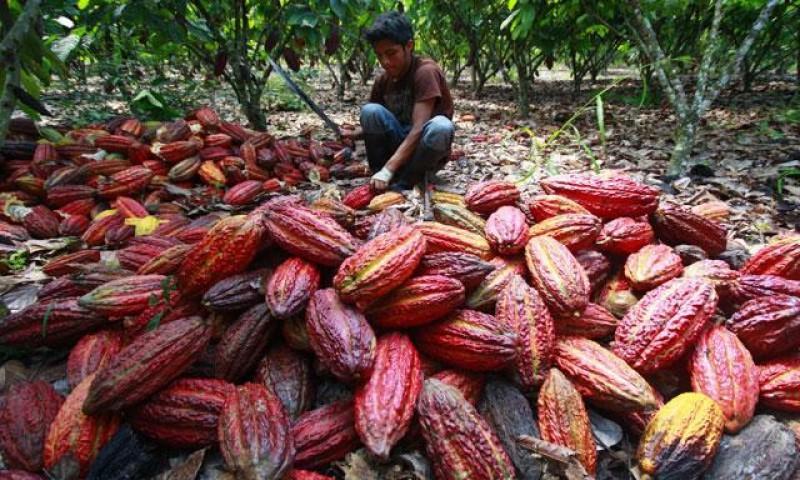
FINCA LA ALTAGRACIA
PAESE: Repubblica Dominicana
ZONA DI COLTIVAZIONE: 45 ettari nella Provincia di La Altagracia, Anamuya
GENETICA: Trinitario e ibridi nazionali
PROFILO AROMATICO: Frutti rossi, banana, prugna con finale speziato
RACCOLTO: Maggio – Agosto
Finca la Altagracia
Il cacao della Finca Altagracia viene fermentato per 6 giorni in cassoni di legno di cedro posizionati a cascata e successivamente viene essiccato su reti plastiche rialzate da un metro da terra per far si che avvenga un essicazione a 360 gradi del cacao. Una volta pronto viene controllato, selezionato, insacchettato ed è pronto per essere spedito in tutto il mondo.
PIANTAGIONE
La Finca Altagracia è una realtà a conduzione famigliare che coltiva e commercializza cacao da 45 anni.
Da tre anni hanno avviato un nuovo progetto di ricerca, formazione e sperimentazione, attraverso il quale stanno portando la qualità della loro materia prima ancora più in alto.
La passione per il cacao è sempre stata grandissima e la longeva esperienza nel settore della logistica ha dato loro modo di creare un ambiente dinamico in cui riuscire a occuparsi di tutto, seguendo la supply chain fino al cliente finale. Questo progetto si chiama “Two Sides” e nasce grazie a Christopher, rappresentante della nuova generazione, e la sua voglia di unire i due Paesi che lo identificano. Due lati, due volti, due facce che rappresentano una la Repubblica Dominicana e una l’Italia.
Two sides punta a valorizzare la sua terra d’origine, la Repubblica Dominicana, le sue materie prime e il suo popolo. La sua missione è quella di partire da un piccolo paese di campagna della Repubblica Dominicana chiamato Anamuya, dare valore al grande lavoro dei campesinos in piantagione, coltivare il miglior cacao possibile, per poi farlo conoscere a chi produce.
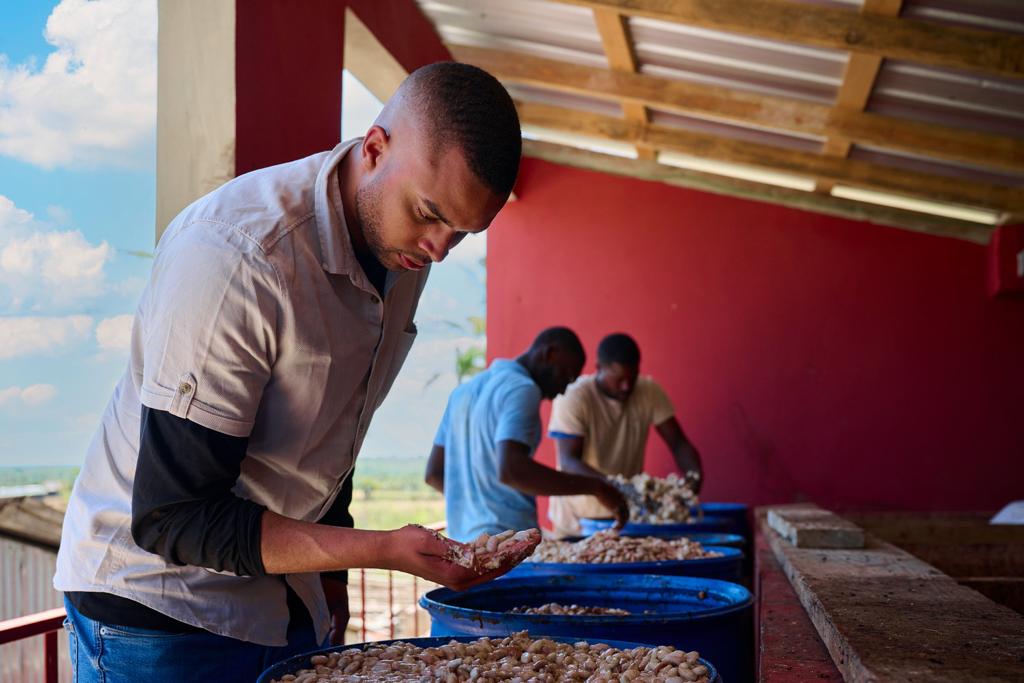
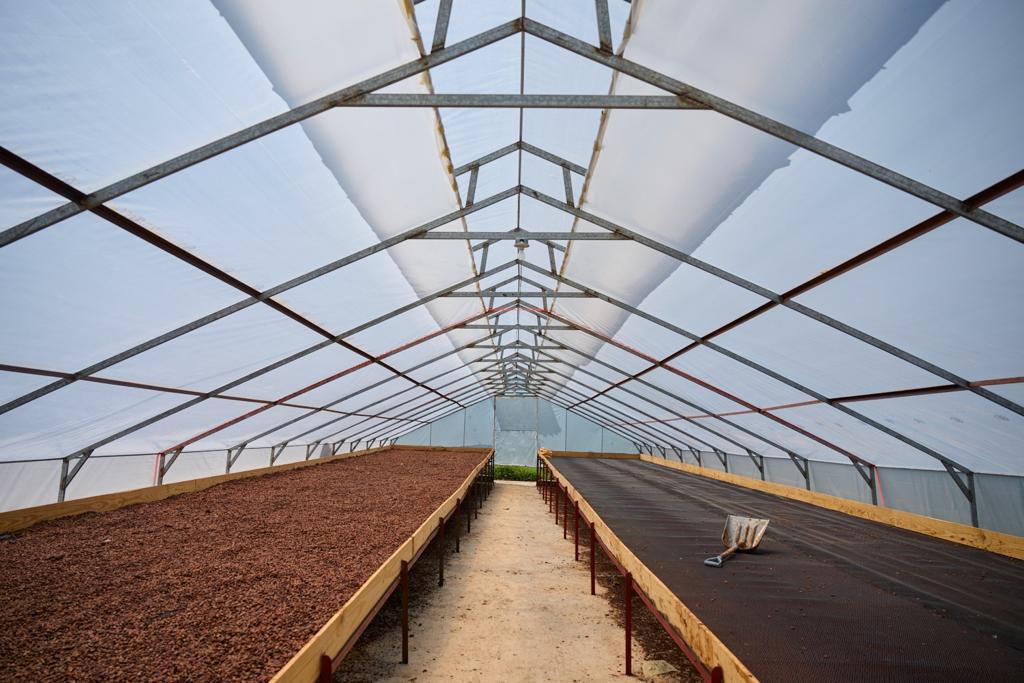
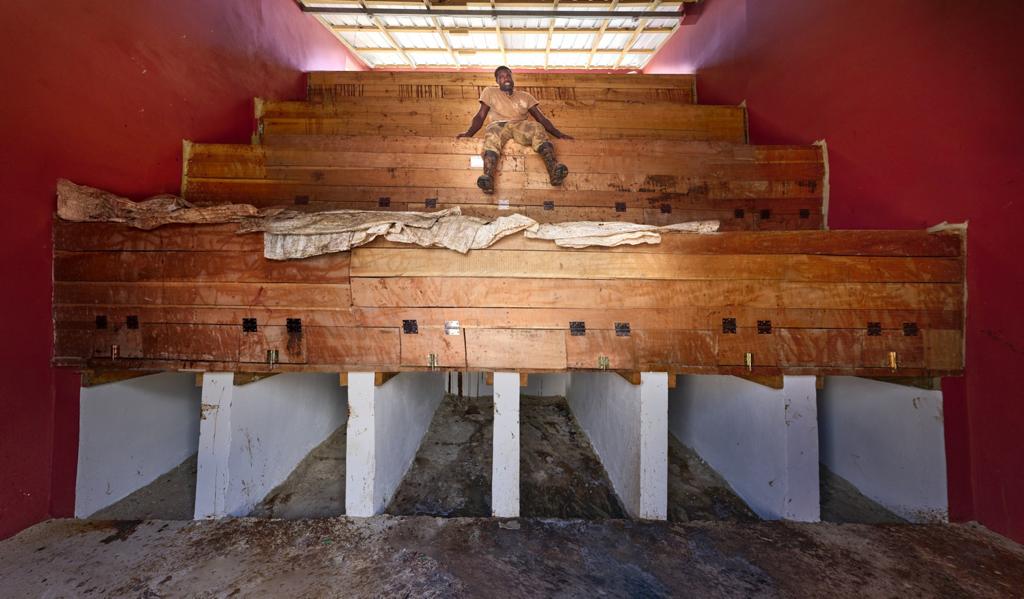
HACIENDA VICTORIA
PAESE: Ecuador
ZONA DI COLTIVAZIONE: Tenuta di circa 500 ettari situata nel cantone di Guayaquil, tra le colline nella provincia di Guayas.
GENETICA: Arriba Nacional
PROFILO AROMATICO: Floreale, miele, agrumi
RACCOLTA: Giugno/ Agosto, Ottobre/Dicembre
HACIENDA VICTORIA
PIANTAGIONE
Hacienda Victoria è una tenuta situata nei pressi di Cerecita, vicino alla costa dell’Ecuador.
Nascosta tra le dolci colline della provincia di Guayas, la regione presenta condizioni climatiche perfette per la fioritura degli alberi di cacao. Hacienda Victoria è stata fondata nel 2009 da Carlos Eduardo García Fuentes che, insieme alla famiglia, acquista un terreno e inizia a coltivare un solo tipo di cacao, l’Arriba Nacional.
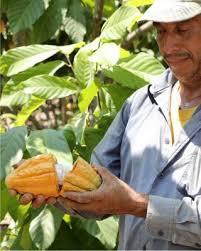
TABAQUITE VILLAGE
PAESE: Trinidad e Tobago
ZONA DI COLTIVAZIONE: Piccoli produttori dell’area di Tabaquite, un villaggio situato nel centro dell’isola
GENETICA: Trinitario
PROFILO AROMATICO: Pompelmo, uvetta, cannella con un buon finale di cacao
RACCOLTO: Dicembre – Marzo
TABAQUITE VILLAGE
PIANTAGIONE
La Repubblica di Trinidad e Tobago è molto importante per la storia del cacao.
La pianta di cacao fu introdotta per la prima volta sull’isola nel XVI secolo dagli spagnoli. Duecento anni dopo, l’isola divenne un rifugio per questa pianta quando le malattie e la peste devastarono le piantagioni dell’America centrale e meridionale.
Le varietà introdotte sono state incrociate per produrre un ceppo che presentava la robustezza delle varietà amazzoniche e il carattere delicato dei Criollos: il Trinitario. In un’area centrale dell’isola, vicino al villaggio di Tabaquite, è nata una comunità di piccoli agricoltori che si occupa della cura e della coltivazione delle piante e dopo il raccolto fermenta ed essicca il cacao in un centro comune chiamato TABAQUITE CACAO FERMENTARY, nato nel 2002 proprio per permettere alla comunità di sviluppare un mercato più ampio per la loro materia prima, dalle aromaticità uniche.
La fermentazione avviene per 7-8 giorni in cassette di legno a più livelli. L’essiccazione in questo caso avviene con essiccatoi meccanici per raggiungere un tasso di umidità del 6,5-7%. A questo punto le fave sono pronte per essere insacchettate e spedite in tutto il mondo.
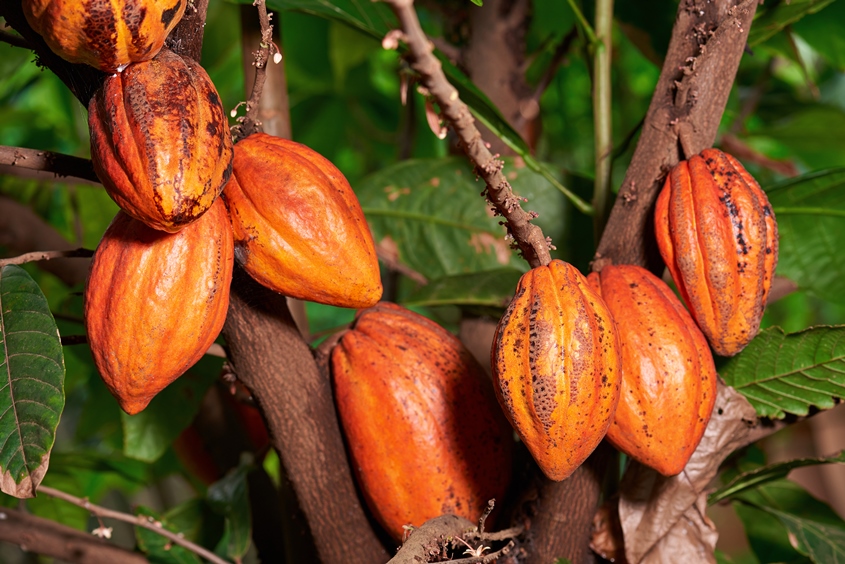
COOPERATIVA CECAQ 11
PAESE: Repubblica di São Tomé e Principe, Africa
ZONA DI COLTIVAZIONE: La cooperativa è formata da 20 comunità, ognuna con la sua piccola piantagione
GENETICA: Amenolado.
PROFILO AROMATICO: Note di frutti rossi, pepe e uva passa
RACCOLTO: Marzo – maggio (raccolto principale) – febbraio (raccolto intermedio)
COOPERATIVA CECAQ 11
Si ritiene che il patrimonio genetico di queste due isole sia servito come base per lo sviluppo dell’Amelonado dell’Africa occidentale. A metà del XX secolo furono introdotte altre varietà dall’Ecuador, Trinidad e Venezuela
PIANTAGIONE
Hacienda Victoria è una tenuta situata nei pressi di Cerecita, vicino alla costa dell’Ecuador.
Nascosta tra le dolci colline della provincia di Guayas, la regione presenta condizioni climatiche perfette per la fioritura degli alberi di cacao. Hacienda Victoria è stata fondata nel 2009 da Carlos Eduardo García Fuentes che, insieme alla famiglia, acquista un terreno e inizia a coltivare un solo tipo di cacao, l’Arriba Nacional.
La missione dell’Hacianda Victoria è sempre stata quella di garantire una materia prima di altissima qualità senza dimenticare il rispetto per l’ambiente. Questa realtà lavora da anni con agronomi e consulenti ambientali per assicurarsi che le piante siano gestite al meglio e per coltivare una materia prima che salvaguardi l’ambiente, la fauna e le comunità circostanti. Grande attenzione è posta ad ogni passaggio, dalla raccolta passando per la fermentazione fino all’essiccazione. Le fave di cacao sono selezionate con cura per ottenere una materia prima ben fermentata, pulita e dalla forte carica aromatica, tipica dell’Arriba Nacional. Il cacao è tutto Arriba Nacional, senza compromessi e senza l’aggiunta di altre varietà più produttive ma meno aromatiche, ciò permette di avere una materia prima dall’alto profilo con note fresche, floreali e fruttate.
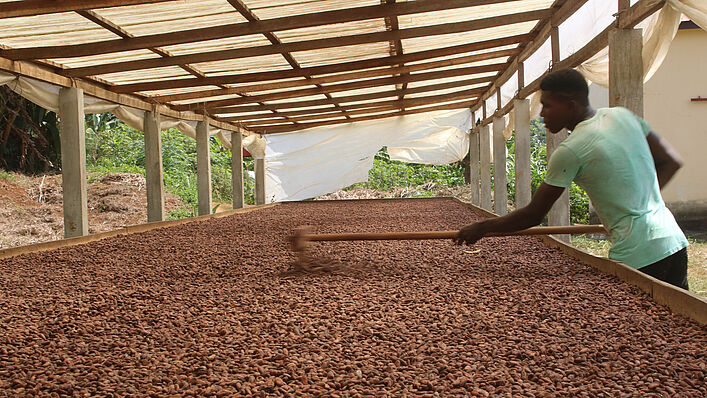
MAKIRA GOLD
PAESE: Isole Solomon
AREA DI COLTIVAZIONE: Isola di Makira e altre piccole isole minori dell’arcipelago
GENETICA: Amenolado
PROFILO AROMATICO: Buona acidità con note di frutta fresca, leggermente floreale
RACCOLTO: Tutto l’anno
MAKIRA GOLD
PIANTAGIONE
Makira Gold nasce per aiutare i piccoli coltivatori delle Isole Solomon a creare un mercato per il loro cacao.
Le Isole Solomon sono un arcipelago che si trova nell’Oceano Pacifico, composto da sei isole maggiori e più di novecento isole minori. Questa conformazione ha sempre portato non pochi problemi nell’organizzazione del trasporto del cacao e del conseguente sviluppo di un mercato internazionale.
Makira Gold si occupa dell’aspetto organizzativo e copre le spese di trasporto della materia prima dalle piccole isole a una delle principali, isola di Makira. Ogni contadino coltiva il suo terreno, raccoglie, fermenta ed essicca il cacao, Makira Gold si occupa del ritiro e si assicura che il cacao sia venduto al giusto prezzo.
Supportando le comunità locali si riesce a intervenire anche sulla salvaguardia dell’ambiente, le coltivazioni di cacao, insieme a quelle di cocco, frutta tropicale e radici locali, riescono a ingrandirsi combattendo così la deforestazione e incentivando la biodiversità.
Il cacao viene raccolto praticamente nell’arco di tutto l’anno, ogni piantagione raccoglie il suo cacao, lo fermenta in casse di legno, viene poi fatto essiccare al sole con l’introduzione di tettoie protettive, perché a causa dei cambiamenti climatici il verificarsi di pesanti temporali è aumentato notevolmente. Una volta arrivati al magazzino centrale, le fave vengono ricontrollate per verificarne la qualità e poi sono pronte per essere spedite in tutto il mondo.
MOUNTAINS OF THE MOON
PAESE: Uganda
ZONA DI COLTIVAZIONE: Bundibugyo, Mountains of the Moon.
GENETICA: Amenolado e ibridi di Trinitario
PROFILO AROMATICO: Leggere note speziate, frutta esotica con un finale di caramello
RACCOLTA: Ottobre – Marzo
MOUNTAINS OF THE MOON
PIANTAGIONE
Alle pendici della catena del Rwenzori si trovano dei piccoli appezzamenti nei quali si coltiva cacao; ogni famiglia possiede un lotto di terreno e la Cooperativa Mountains of the Moon affianca queste famiglie aiutandole dopo la raccolta.
Il cacao, una volta estratto dalle cabosse, viene portato in un centro di fermentazione comune, dove tutte le fave vengono fermentate ed essiccate insieme.
La Cooperativa lavora assiduamente per dare la possibilità ai coltivatori di organizzarsi, avere accesso a formazione, certificazioni e miglior prezzi sul mercato. Con questa organizzazione comunitaria, nonostante i piccoli appezzamenti, le famiglie hanno la possibilità di vendere il proprio cacao e vivere di questo.
Ogni famiglia si occupa di raccogliere le cabosse mature ed estrarne le fave, che vengono poi portate al centro di fermentazione lo stesso giorno. Qua con l’aiuto di agronomi specializzati, inizia il processo di fermentazione, che dura circa sei giorni, e la successiva essiccazione delle fave. Una volta pronte, le fave vengono controllate e selezionate prima di essere messe nei sacchi, per avere un prodotto finale il più possibile di qualità.
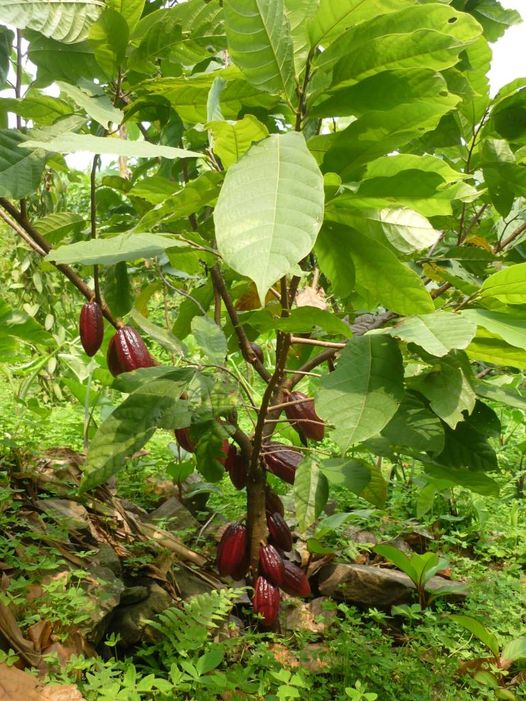
Each cacao-growing region has unique characteristics that influence the flavor and aroma of its beans, contributing to the diverse flavor profiles of chocolate. The combination of factors such as climate, soil, and cultivation techniques plays a fundamental role in determining the quality of cacao produced in each area.
Our chocolates
Get Marco's letter
Discover the stories behind each creation. I will share with you the passion I put into each stage of my work, from the selection of raw materials to the final transformation. Be inspired by the stories that tell my connection to nature and the land.
